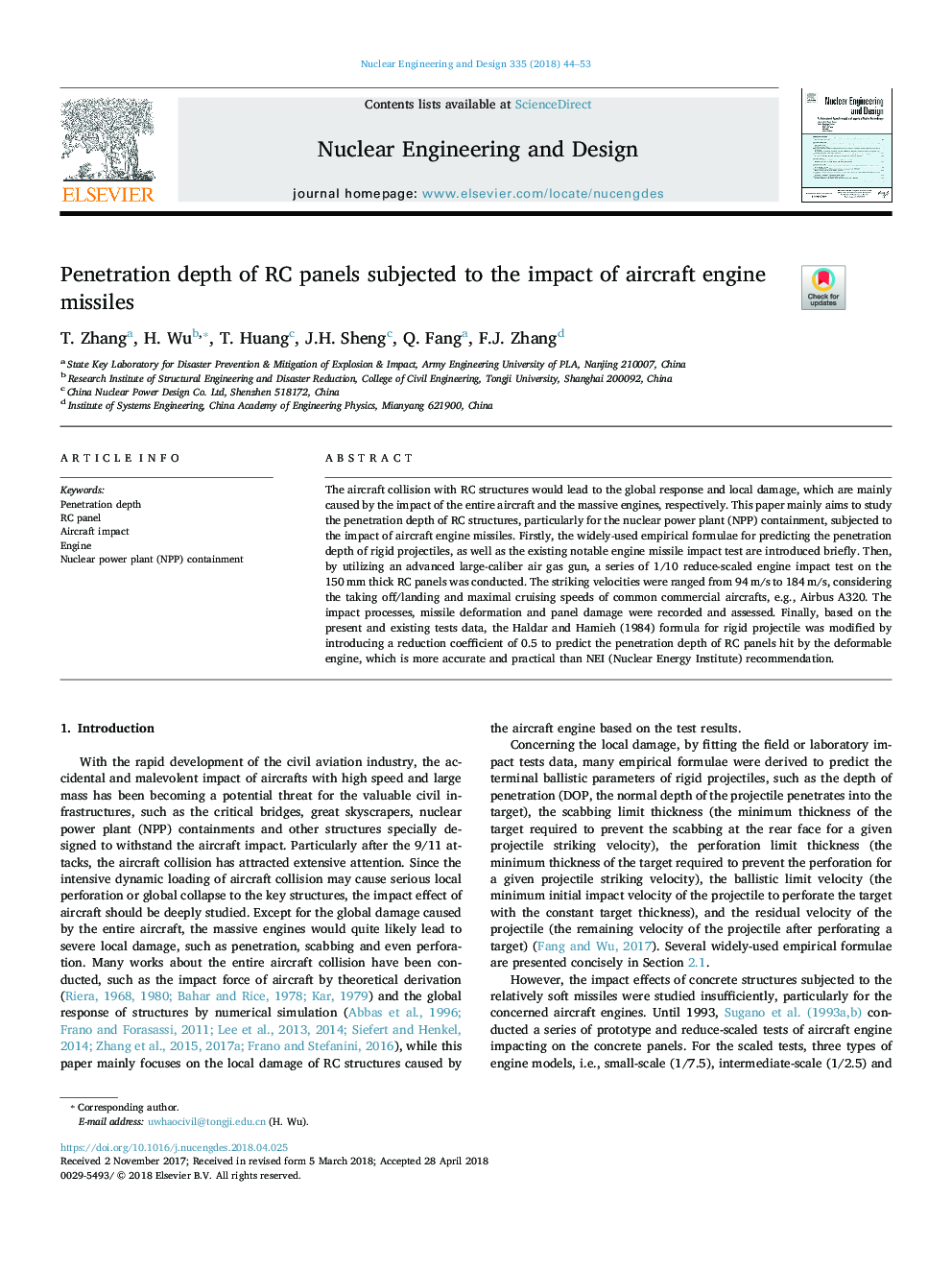| Article ID | Journal | Published Year | Pages | File Type |
|---|---|---|---|---|
| 6758730 | Nuclear Engineering and Design | 2018 | 10 Pages |
Abstract
The aircraft collision with RC structures would lead to the global response and local damage, which are mainly caused by the impact of the entire aircraft and the massive engines, respectively. This paper mainly aims to study the penetration depth of RC structures, particularly for the nuclear power plant (NPP) containment, subjected to the impact of aircraft engine missiles. Firstly, the widely-used empirical formulae for predicting the penetration depth of rigid projectiles, as well as the existing notable engine missile impact test are introduced briefly. Then, by utilizing an advanced large-caliber air gas gun, a series of 1/10 reduce-scaled engine impact test on the 150â¯mm thick RC panels was conducted. The striking velocities were ranged from 94â¯m/s to 184â¯m/s, considering the taking off/landing and maximal cruising speeds of common commercial aircrafts, e.g., Airbus A320. The impact processes, missile deformation and panel damage were recorded and assessed. Finally, based on the present and existing tests data, the Haldar and Hamieh (1984) formula for rigid projectile was modified by introducing a reduction coefficient of 0.5 to predict the penetration depth of RC panels hit by the deformable engine, which is more accurate and practical than NEI (Nuclear Energy Institute) recommendation.
Related Topics
Physical Sciences and Engineering
Energy
Energy Engineering and Power Technology
Authors
T. Zhang, H. Wu, T. Huang, J.H. Sheng, Q. Fang, F.J. Zhang,
